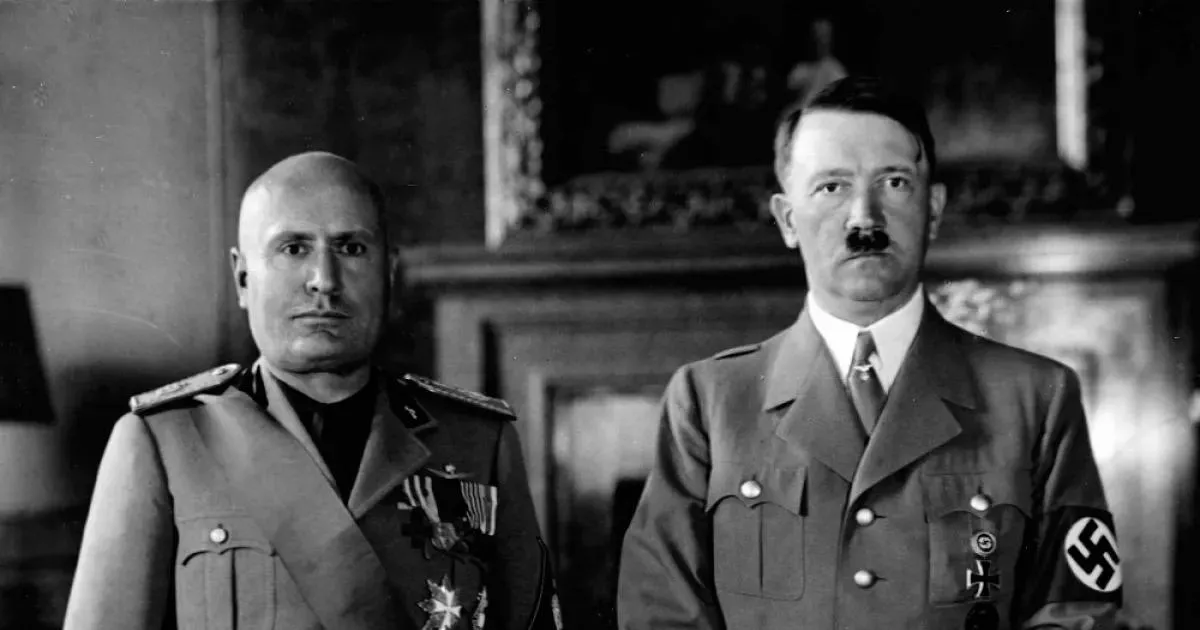Fascism is a far-right, authoritarian, ultranationalist ideology prominent in early 20th-century Europe. It features a dictatorial leader, centralized control, militarism, and suppression of opposition. Fascism emphasizes national or racial interests above individual rights, advocating for strict societal and economic control. It opposes ideologies like communism, democracy, and liberalism, positioning itself on the far right of the political spectrum. Key characteristics include a belief in a natural social hierarchy and the regimentation of society.
1902: Mussolini Studies Sorel, Nietzsche and Pareto
By 1902, Mussolini was studying Georges Sorel, Nietzsche and Vilfredo Pareto.
1908: Marinetti Writes the Manifesto of Futurism
In 1908, Filippo Tommaso Marinetti wrote the Manifesto of Futurism, championing modernism, action, and political violence as necessary elements of politics while denouncing liberalism and parliamentary politics.
1908: Sorel Promotes Political Violence
In 1908, French revolutionary syndicalist Georges Sorel promoted the legitimacy of political violence in his work Reflections on Violence and advocated radical syndicalist action to achieve a revolution.
1908: Mussolini Writes "Philosophy of Strength"
In 1908, Mussolini wrote a short essay called "Philosophy of Strength" based on his Nietzschean influence.
1909: Sorel Leaves the Radical Left
By 1909, after the failure of a syndicalist general strike in France, Sorel and his supporters left the radical left and went to the radical right, seeking to merge militant Catholicism and French patriotism with their views.
1910: Sorel Abandons Socialist Literature
By 1910, Georges Sorel announced his abandonment of socialist literature, having initially been a revisionist of Marxism.
1910: Italian Nationalist Association Founded
In 1910, the right-wing Italian Nationalist Association (ANI) was founded, claiming that Italy's economic backwardness was caused by corruption in its political class, liberalism, and division caused by "ignoble socialism".
August 1914: Split in the Italian Political Left Over World War I
At the outbreak of World War I in August 1914, the Italian political left became severely split over its position on the war.
October 1914: Formation of the Revolutionary Fasces of International Action
In October 1914, Angelo Oliviero Olivetti formed a pro-interventionist fascio called the Revolutionary Fasces of International Action.
1914: Brutalization of Societies
Historian George Mosse analyzed fascism as a result of the brutalization of societies in 1914–1918.
1914: Enrico Corradini developed the idea of "proletarian nations"
In 1914, Enrico Corradini introduced the concept of "proletarian nations," defining proletarian as synonymous with producers. This productivist perspective included entrepreneurs, technicians, workers, and soldiers as proletarian.
1914: Sorel Claims "Socialism is Dead"
In 1914, using an aphorism of Benedetto Croce, Georges Sorel claimed that "socialism is dead" because of the "decomposition of Marxism".
1914: Beginning of "supercapitalism"
Mussolini denounced the contemporary "supercapitalism" that he claimed began in 1914 as a failure.
1914: Widespread Use of the Fasces Symbol
Prior to 1914, the fasces symbol was widely employed by various political movements, often of a left-wing or liberal persuasion. Marianne, symbol of the French Republic, was often portrayed in the nineteenth century carrying the fasces.
January 1915: First Meeting of the Fasces of Revolutionary Action
On 24 January 1915, the first meeting of the Fasces of Revolutionary Action was held, where Mussolini declared the necessity for Europe to resolve its national problems.
1915: Fasces of Revolutionary Action Founded
In 1915, according to Benito Mussolini, the Fasces of Revolutionary Action were founded in Italy. These fasci were political organizations similar to guilds or syndicates.
1915: First Use of the Term "Fascism"
The term "fascism" was first used in 1915 by members of Mussolini's movement, the Fasces of Revolutionary Action.
1917: Influence of the October Revolution
The October Revolution of 1917, in which Bolshevik communists led by Vladimir Lenin seized power in Russia, greatly influenced the development of fascism.
1918: Brutalization of Societies
Historian George Mosse analyzed fascism as a result of the brutalization of societies in 1914–1918.
June 1919: Presentation of "The Manifesto of the Italian Fasces of Combat"
On June 6, 1919, "The Manifesto of the Italian Fasces of Combat", created by Alceste De Ambris and Filippo Tommaso Marinetti, was presented in the fascist newspaper Il Popolo d'Italia. The Manifesto supported various reforms, including universal suffrage, proportional representation, and government representation through a corporatist system.
1919: Mussolini Founds the Italian Fasces of Combat
In 1919, Benito Mussolini founded the Italian Fasces of Combat in Milan. Two years later, this organization became the National Fascist Party.
1919: Fascist Manifesto
In 1919, Filippo Tommaso Marinetti co-authored the Fascist Manifesto.
1919: Mussolini consolidated control over the fascist movement
In 1919, Mussolini consolidated control over the fascist movement, known as Sansepolcrismo, with the founding of the Italian Fasces of Combat.
1919: Mussolini claims Jewish Bankers connected to Russian Bolsheviks
In 1919, Mussolini declared that the Jewish bankers in London and New York were connected by race to the Russian Bolsheviks and that eight percent of the Russian Bolsheviks were Jews.
1919: Start of the "Red Year"
In 1919, The "Red Year" (Biennio Rosso) started. Mussolini and the fascists took advantage of the situation by allying with industrial businesses and attacking workers and peasants in the name of preserving order and internal peace in Italy.
1920: Organization against fascism began
Around 1920, organization against fascism began.
1920: Peak of militant strike activity by industrial workers
In 1920, militant strike activity by industrial workers reached its peak in Italy. Mussolini and the fascists took advantage of the situation by allying with industrial businesses and attacking workers and peasants in the name of preserving order and internal peace in Italy.
1920: Founding of the Charter of Carnaro
In 1920, the Charter of Carnaro was founded. D'Annunzio and De Ambris designed the Charter, which advocated national-syndicalist corporatist productionism alongside D'Annunzio's political views. Many fascists saw it as an ideal constitution for a fascist Italy.
1920: James on Garvey's Actions
In 1938, C. L. R. James wrote "all the things that Hitler was to do so well later, Marcus Garvey was doing in 1920 and 1921".
1921: Fascist movement's membership soared to approximately 250,000
By 1921, after Fascism's accommodation of the political right, the fascist movement's membership soared to approximately 250,000.
1921: James on Garvey's Actions
In 1938, C. L. R. James wrote "all the things that Hitler was to do so well later, Marcus Garvey was doing in 1920 and 1921".
October 1922: Fascist Party held its annual congress in Naples
On October 24, 1922, the Fascist Party held its annual congress in Naples, where Mussolini ordered Blackshirts to take control of public buildings and trains and to converge on three points around Rome. On October 30, King Victor Emmanuel III of Italy decided to appoint Mussolini as Prime Minister of Italy.
1922: Fascist paramilitaries escalated their strategy
Beginning in 1922, fascist paramilitaries escalated their strategy from one of attacking socialist offices and the homes of socialist leadership figures, to one of violent occupation of cities.
1922: Death of Georges Sorel
French revolutionary syndicalist Georges Sorel, who promoted the legitimacy of political violence, died in 1922.
1922: Fascism Became the State Ideology of Italy
In 1922, Fascism became the state ideology of Italy.
November 1923: Failed Beer Hall Putsch in Munich
In November 1923, the Nazis, led by Hitler and the German war hero Erich Ludendorff, attempted a "March on Berlin" modeled upon the March on Rome, which resulted in the failed Beer Hall Putsch in Munich.
January 1925: Mussolini declared that he was personally responsible for what happened
On January 3, 1925, Mussolini addressed the Fascist-dominated Italian parliament and declared that he was personally responsible for what happened, but insisted that he had done nothing wrong. Mussolini proclaimed himself dictator of Italy, assuming full responsibility over the government and announcing the dismissal of parliament.
December 1925: Decree made Mussolini solely responsible to the King
In December 1925, a decree made Mussolini solely responsible to the King.
1925: Creation of the Palazzo Vidoni Pact
In 1925, the fascist regime created a corporatist economic system with creation of the Palazzo Vidoni Pact, in which the Italian employers' association Confindustria and fascist trade unions agreed to recognize each other as the sole representatives of Italy's employers and employees, excluding non-fascist trade unions.
1925: Women's suffrage partly realized
In late 1925, women's suffrage was partly realized, with all opposition parties banned or disbanded.
1926: Increased penalties for abortion
In 1926, the fascists banned literature on birth control and increased penalties for abortion, declaring both crimes against the state.
1927: Creation of the Charter of Labour
In 1927, the Fascist regime created the Charter of Labour, which established workers' rights and duties and created labour tribunals to arbitrate employer-employee disputes.
1929: Fascism became entrenched in power
From 1925 to 1929, fascism steadily became entrenched in power: opposition deputies were denied access to parliament, censorship was introduced and a December 1925 decree made Mussolini solely responsible to the King.
1929: Signing of the Lateran Treaty
In 1929, the fascist regime briefly gained what was in effect a blessing of the Catholic Church after the regime signed a concordat with the Church, known as the Lateran Treaty, which gave the papacy state sovereignty and financial compensation for the seizure of Church lands by the liberal state in the 19th century
1929: The Depression
Since The Depression was a crisis of laissez-faire capitalism and its political counterpart, parliamentary democracy, fascism could pose as the 'third-way' alternative between capitalism and Bolshevism, the model of a new European 'civilization.'
1931: Revolutionary Union in Power in Peru
In 1931, the Revolutionary Union, a fascist political party, came into power in Peru.
1931: Death of Enrico Corradini
Radical Italian nationalist Enrico Corradini, who spoke of the need for a nationalist-syndicalist movement, died in 1931.
1931: Spanish Constitution
The first years of Francisco Franco's regime were characterized by a repression against the anti-fascist ideologies, deep censorship and the suppression of democratic institutions (elected Parliament, Spanish Constitution of 1931, Regional Statutes of Autonomy).
1932: Gyula Gömbös rose to power as Prime Minister of Hungary
In 1932, Hungarian fascist Gyula Gömbös rose to power as Prime Minister of Hungary and attempted to entrench his Unity Party throughout the country. He created an eight-hour work day and a forty-eight-hour work week in industry; sought to entrench a corporatist economy; and pursued irredentist claims on Hungary's neighbors.
1932: Publication of "The Doctrine of Fascism"
In 1932, Mussolini and Giovanni Gentile described their ideology as right-wing in the political essay "The Doctrine of Fascism", stating that it was "the century of authority, a century tending to the 'right,' a fascist century."
1933: Fascism Becomes the State Ideology of Germany
In 1933, fascism became the state ideology of Germany, spurring a large increase in anti-fascist action.
1933: Revolutionary Union in Power in Peru
In 1933, the Revolutionary Union was in power in Peru.
1933: Iron Guard gained representation in the Romanian government
The fascist Iron Guard movement in Romania soared in political support after 1933, gaining representation in the Romanian government, and an Iron Guard member assassinated Romanian prime minister Ion Duca. The Iron Guard was the only fascist movement outside Germany and Italy to come to power without foreign assistance.
1933: Rise of Hitler and the Nazis to power
With the rise of Hitler and the Nazis to power in 1933, liberal democracy was dissolved in Germany and the Nazis mobilized the country for war, with expansionist territorial aims against several countries. In the 1930s, the Nazis implemented racial laws that deliberately discriminated against, disenfranchised and persecuted Jews and other racial and minority groups.
February 1934: Crisis in France during the Dreyfus Affair
During the 6 February 1934 crisis, France faced the greatest domestic political turmoil since the Dreyfus Affair when the fascist Francist Movement and multiple far-right movements rioted en masse in Paris against the French government resulting in major political violence.
July 1934: Abolishment of National Syndicalists in Portugal
In July 1934, Salazar abolished the nearest thing Portugal had to an authentic fascist movement, Rolão Preto's blue-shirted National Syndicalists.
1934: Mussolini Denounces Nazism's Racial Theories
After antagonism exploded between Nazi Germany and Fascist Italy over the assassination of Austrian Chancellor Dollfuss in 1934, Mussolini and Italian fascists denounced and ridiculed Nazism's racial theories, particularly by denouncing its Nordicism, while promoting Mediterraneanism.
1934: State control of Italian economy
In 1934, Mussolini declared that "[t]hree-fourths of Italian economy, industrial and agricultural, is in the hands of the state."
1934: Mussolini Declares Women's Employment a Thorny Problem
In 1934, Mussolini declared that the employment of women was a major aspect of the thorny problem of unemployment and that for women, working was incompatible with childbearing. Mussolini went on to say that the solution to unemployment for men was the exodus of women from the work force.
1934: Mussolini on Fascism as a Universal Phenomenon
In early 1934, Mussolini stated that fascism had become a universal phenomenon since 1929. He claimed that the dominant forces of the 19th century, such as democracy, socialism, and liberalism, were exhausted, and the new political and economic forms of the 20th century were fascist.
1934: IRI reports holding assets of "48.5 percent of the share capital of Italy"
In early 1934, the IRI reported that they held assets of "48.5 percent of the share capital of Italy", which later included the capital of the banks themselves.
1934: Italian Fascism's Stance Towards German Nazism
Italian fascism's stance towards German Nazism fluctuated from support from the late 1920s to 1934, when it celebrated Hitler's rise to power and Mussolini's first meeting with Hitler in 1934; to opposition from 1934 to 1936 after the assassination of Italy's allied leader in Austria, Engelbert Dollfuss, by Austrian Nazis.
1935: Italy Invades Ethiopia
In 1935, Italy invaded Ethiopia. As a result, it faced condemnation by the League of Nations and widespread diplomatic isolation.
1935: Nazi Germany expanded legality of abortion.
In 1935, Nazi Germany expanded the legality of abortion by amending its eugenics law to promote abortion for women with hereditary disorders. The law allowed abortion if a woman gave her permission and the fetus was not yet viable and for purposes of so-called racial hygiene.
1935: Walter Benjamin identifies aestheticization of politics as a key ingredient in fascist regimes
In Walter Benjamin's 1935 work, "The Work of Art in the Age of Mechanical Reproduction," he identifies aestheticization of politics as a key ingredient in fascist regimes. He references Filippo Tommaso Marinetti, who claims "war is beautiful."
1935: National Socialist Movement in the Netherlands at its height
In the Netherlands, the National Socialist Movement in the Netherlands was at its height in the 1930s due to the Great Depression, especially in 1935 when it won almost eight percent of votes, until the year 1937.
1936: Germany Remilitarizes the Rhineland
In 1936, Germany remilitarized the industrial Rhineland, a region that had been ordered demilitarized by the Treaty of Versailles.
1937: Crackdown on Brazilian Integralists
In 1937, the Brazilian Integralists, who were led by Plínio Salgado and claimed around 200,000 members, faced a crackdown from the Estado Novo of Getúlio Vargas, following coup attempts.
1937: IRI made a permanent institution
In 1937, the Institute for Industrial Reconstruction (IRI) was made a permanent institution in Fascist Italy. It pursued fascist policies to create national autarky and had the power to take over private firms to maximize war production.
1937: End of National Socialist Movement
In the Netherlands, the National Socialist Movement in the Netherlands was at its height in the 1930s due to the Great Depression, especially in 1935 when it won almost eight percent of votes, until the year 1937.
1938: James on Garvey's Actions
In 1938, C. L. R. James wrote "all the things that Hitler was to do so well later, Marcus Garvey was doing in 1920 and 1921".
1938: Italy Adopts Antisemitic Laws
In 1938, Mussolini declared upon Italy's adoption of antisemitic laws that Italian fascism had always been antisemitic.
1938: Italian cinema flourished as the regime stopped the import of Hollywood films.
In 1938, the Mussolini regime in Italy stopped the import of Hollywood films, subsidized domestic production, and kept ticket prices low to encourage Italian cinema. The regime also censored criticism and used the state-run Luce Institute film company to laud the Duce through newsreels, documentaries, and photographs.
1938: Seguro Obrero Massacre in Chile
In 1938, the National Socialist Movement of Chile attempted a coup d'état, which resulted in the Seguro Obrero massacre.
1939: Perón admires Italian Fascism
Between 1939 and 1941, prior to his rise to power, Perón had developed a deep admiration of Italian Fascism and modelled his economic policies on Italian fascist policies.
1939: Over 17 Million Germans Obtain Assistance from the NSV
By 1939, over 17 million Germans had obtained assistance from the National Socialist People's Welfare (NSV). The agency provided support only to those who were "racially sound, capable of and willing to work, politically reliable, and willing and able to reproduce."
1941: Perón admires Italian Fascism
Between 1939 and 1941, prior to his rise to power, Perón had developed a deep admiration of Italian Fascism and modelled his economic policies on Italian fascist policies.
1942: Emergence of neo-fascist ideology
According to Jean-Yves Camus and Nicolas Lebourg, the neo-fascist ideology emerged in 1942, after Nazi Germany invaded the USSR and decided to reorient its propaganda on a Europeanist ground.
1943: Mussolini Removed as Head of Government
In 1943, after Italy faced multiple military failures, Mussolini was removed as head of government and arrested on the order of King Victor Emmanuel III, who proceeded to dismantle the Fascist state and declared Italy's switching of allegiance to the Allied side. Mussolini was later rescued by German forces.
1944: Death of Filippo Tommaso Marinetti
Filippo Tommaso Marinetti, leader of Futurism, which was both an artistic-cultural and initially political movement in Italy, died in 1944.
1944: Orwell's Observation on the Term "Fascism"
In 1944, George Orwell noted that the term "fascist" had been used to denigrate diverse positions "in internal politics" and that it was inconvenient to define.
April 1945: Mussolini Captured and Executed
On 28 April 1945, Mussolini was captured and executed by Italian communist partisans. On 30 April 1945, Hitler committed suicide.
November 1945: Nuremberg Trials Begin
Beginning in November 1945, an International Military Tribunal was convened in Nuremberg to try Nazi leaders for war crimes.
1945: Nazi Germany Faced Losses
From 1943 to 1945, Nazi Germany faced multiple losses and steady Soviet and Western Allied offensives.
1945: End of World War II and Disgrace of Fascism
Since the end of World War II in 1945, fascism has been largely disgraced, and few parties have openly described themselves as fascist, with the term often used pejoratively.
1946: Orwell's View on "Fascism"
In 1946, George Orwell wrote that "'Fascism' has now no meaning except in so far as it signifies something not desirable."
1946: Perón's regime in Argentina
In Argentina, Peronism, associated with the regime of Juan Perón was in power from 1946 to 1955 and 1973 to 1974 and was influenced by fascism.
1949: Conclusion of Nuremberg Trials
The International Military Tribunal in Nuremberg, which began in November 1945, lasted through 1949. Numerous Nazi political, military and economic leaders were tried and convicted of war crimes.
1955: Perón's regime in Argentina
In Argentina, Peronism, associated with the regime of Juan Perón was in power from 1946 to 1955 and 1973 to 1974 and was influenced by fascism.
1973: Perón's regime in Argentina
In Argentina, Peronism, associated with the regime of Juan Perón was in power from 1946 to 1955 and 1973 to 1974 and was influenced by fascism.
1974: Perón's regime in Argentina
In Argentina, Peronism, associated with the regime of Juan Perón was in power from 1946 to 1955 and 1973 to 1974 and was influenced by fascism.
1974: Rachele Mussolini stated that her husband had always been an atheist
In her 1974 book, Mussolini's widow Rachele stated that her husband had always been an atheist until near the end of his life, writing that her husband was "basically irreligious until the later years of his life."
1975: Death of Francisco Franco
In 1975, Francisco Franco died, leading to the transformation of Spain into a liberal democracy.
1981: Jean Baudrillard Interprets Fascism
In 1981, Jean Baudrillard interpreted fascism in Simulacra and Simulation as a political aesthetic of death and a countermovement against rationalism, secularism, and pacifism.
2000: Griffiths on the Misuse of "Fascism"
In 2000, Richard Griffiths of the University of Wales wrote that "fascism" is the "most misused, and over-used word, of our times".
2003: Historian Adrian Lyttelton's writing
In 2003, historian Adrian Lyttelton wrote: "The expansion of Fascism in the rural areas was stimulated and directed by the reaction of the farmers and landowners against the peasant leagues of both Socialists and Catholics."
2008: AN joined Forza Italia
In 2008, AN joined Forza Italia in Berlusconi's new party The People of Freedom.
2012: Refounding of Brothers of Italy
In 2012, a group of politicians split from The People of Freedom, refounding the party with the name Brothers of Italy.
2013: Arrest of Golden Dawn Leaders
In 2013, after the murder of an anti-fascist musician, the Greek government ordered the arrest of Golden Dawn's leader Nikolaos Michaloliakos and other members on charges related to being associated with a criminal organization.
2016: Increase in Prominence of Anti-Fascism
In the 21st century, anti-fascism greatly increased in prominence as a response to the resurgence of the radical right, especially after the 2016 election of Donald Trump.
2017: Unite the Right Rally
In 2017, the Unite the Right rally brought together marchers from various far-right groups and movements, including members of the alt-right, neo-Confederates, neo-fascists, white nationalists, neo-Nazis, Klansmen, and far-right militias.
2018: Publication of "How Fascism Works: The Politics of Us and Them"
In 2018, Jason Stanley's book "How Fascism Works: The Politics of Us and Them" was published, providing a definition of fascism.
October 2020: Athens Appeals Court Announces Verdicts for Golden Dawn Members
On 7 October 2020, the Athens Appeals Court announced verdicts for 68 defendants, including the party's political leadership. Nikolaos Michaloliakos and six other prominent members and former members of parliament (MPs) were found guilty of running a criminal organization.
2020: Study exploring the link between the threat of socialism and Mussolini's rise to power.
A 2020 article by Daron Acemoğlu, Giuseppe De Feo, Giacomo De Luca, and Gianluca Russo in the Center for Economic and Policy Research, exploring the link between the threat of socialism and Mussolini's rise to power, found "a strong association between the Red Scare in Italy and the subsequent local support for the Fascist Party in the early 1920s."
2020: Stanley's Concerns Substantiated by Global Events
As of 2020, Jason Stanley notes that recent global events, including the COVID-19 pandemic and the 2020–2022 United States racial unrest, have substantiated his concern about how fascist rhetoric is showing up in politics and policies around the world.
2022: Stanley's Concerns Substantiated by Global Events
As of 2022, Jason Stanley notes that recent global events, including the COVID-19 pandemic and the 2020–2022 United States racial unrest, have substantiated his concern about how fascist rhetoric is showing up in politics and policies around the world.
2023: Oleg Orlov claims Russia has descended into fascism
In 2023, Oleg Orlov, the chairman of the Board of Human Rights Center "Memorial", claimed that Russia under Vladimir Putin had descended into fascism and that the army is committing "mass murder".
March 2024: Joe Biden compares Russia to Hitler's conquests
On 7 March 2024, in his 2024 State of the Union Address, American President Joe Biden compared Russia under Vladimir Putin to Adolf Hitler's conquests of Europe.
Mentioned in this timeline
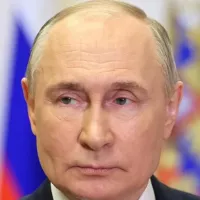
Vladimir Vladimirovich Putin is a Russian politician and former intelligence...
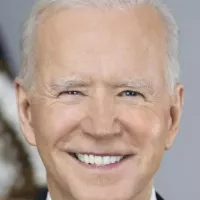
Joe Biden a member of the Democratic Party served as...
Germany officially the Federal Republic of Germany is a Western...

The Catholic Church the largest Christian church globally with over...
France officially the French Republic is primarily located in Western...
Argentina officially the Argentine Republic is located in the southern...
Trending
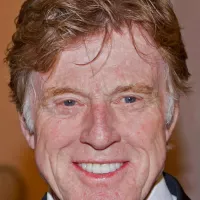
6 months ago Sundance Film Festival's Final Utah Edition: Egyptian Theatre Excluded, Gratitude Celebrated.
1 month ago Alabama Power Announces Electricity Rate Freeze Through 2027 Amid Budget Concerns.
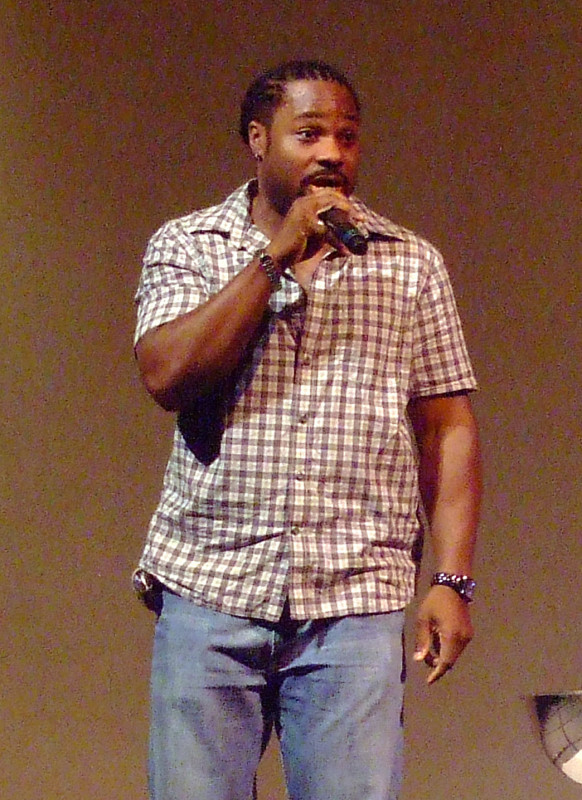
Malcolm-Jamal Warner is an American actor musician and poet best known for his role as Theodore Huxtable on the iconic...
8 months ago Burkina Faso Forces Accused of Killing Civilians in March Attack, HRW Reports.

New Year's Eve observed on December st marks the final day of the year in the Gregorian calendar Celebrations worldwide...

7 months ago Betty White's Name Used in Hudson Bay Polar Bear Study, Stealing the Show
Popular

Stranger Things created by the Duffer Brothers is a popular...

XXXTentacion born Jahseh Dwayne Ricardo Onfroy was a controversial yet...
Turning Point USA TPUSA is an American nonprofit organization founded...

Bernie Sanders is a prominent American politician currently serving as...

Candace Owens is an American conservative political commentator and author...

Jupiter is the fifth and largest planet from the Sun...
